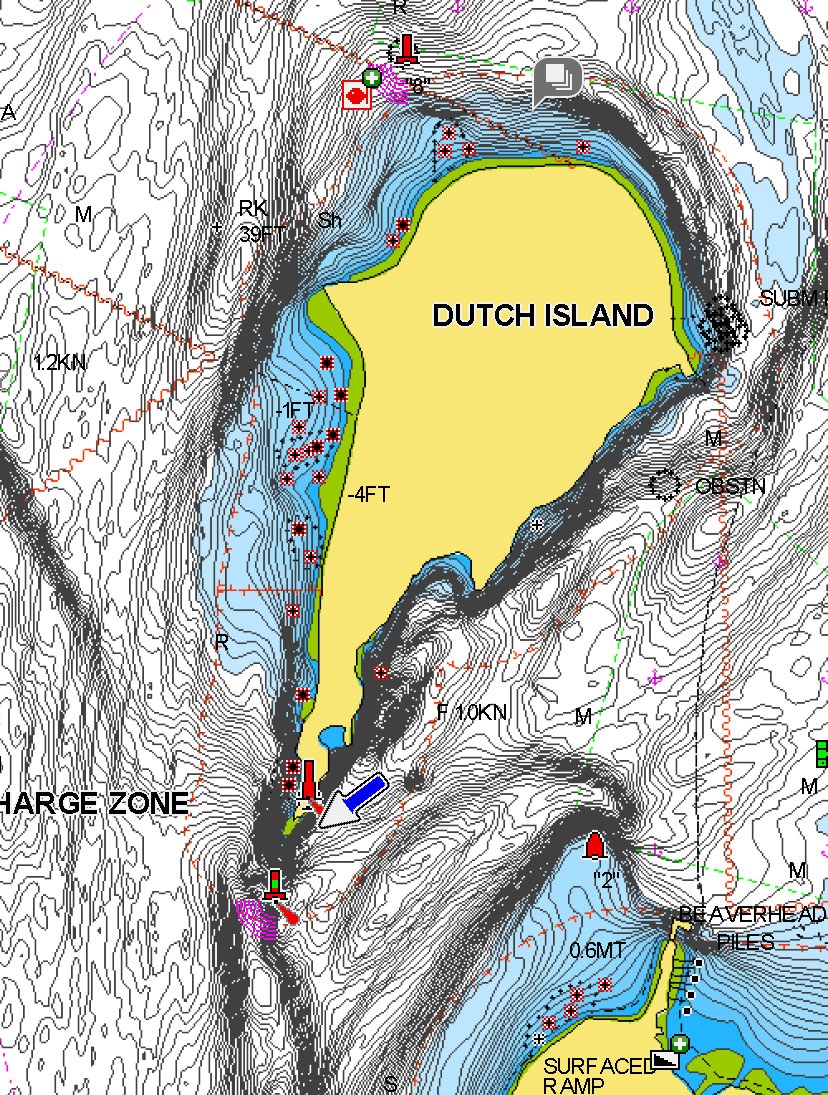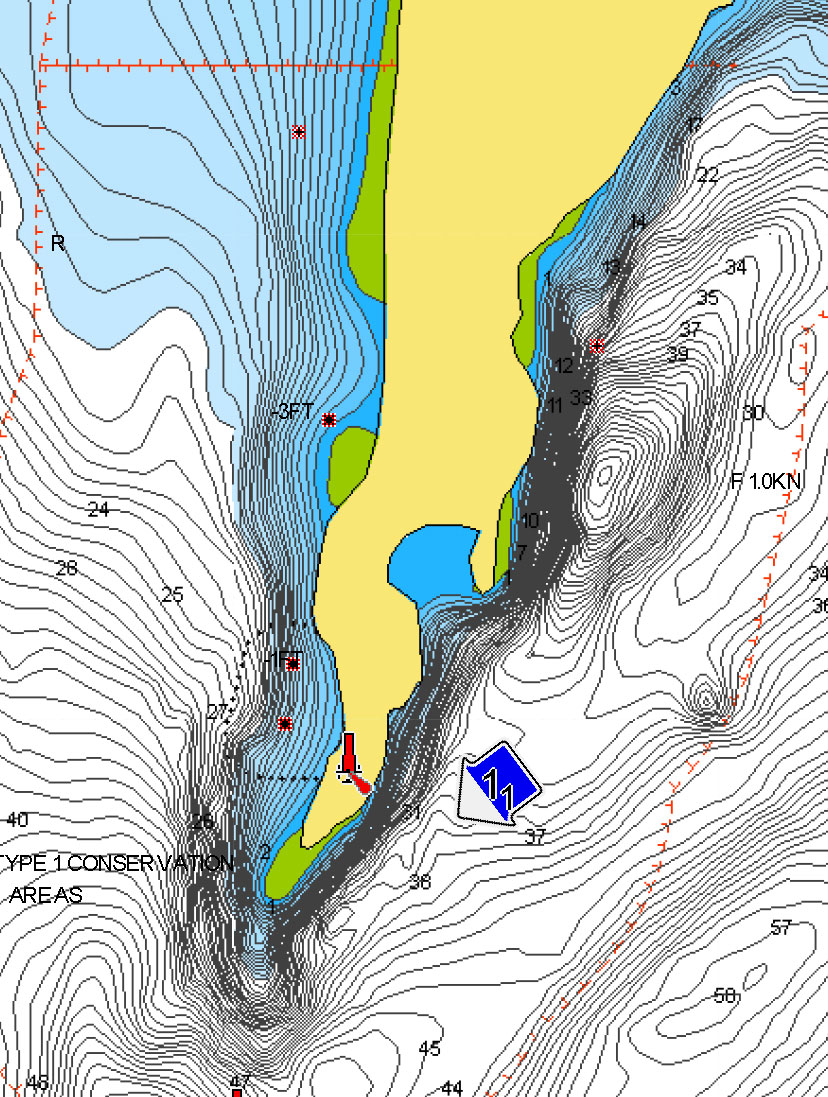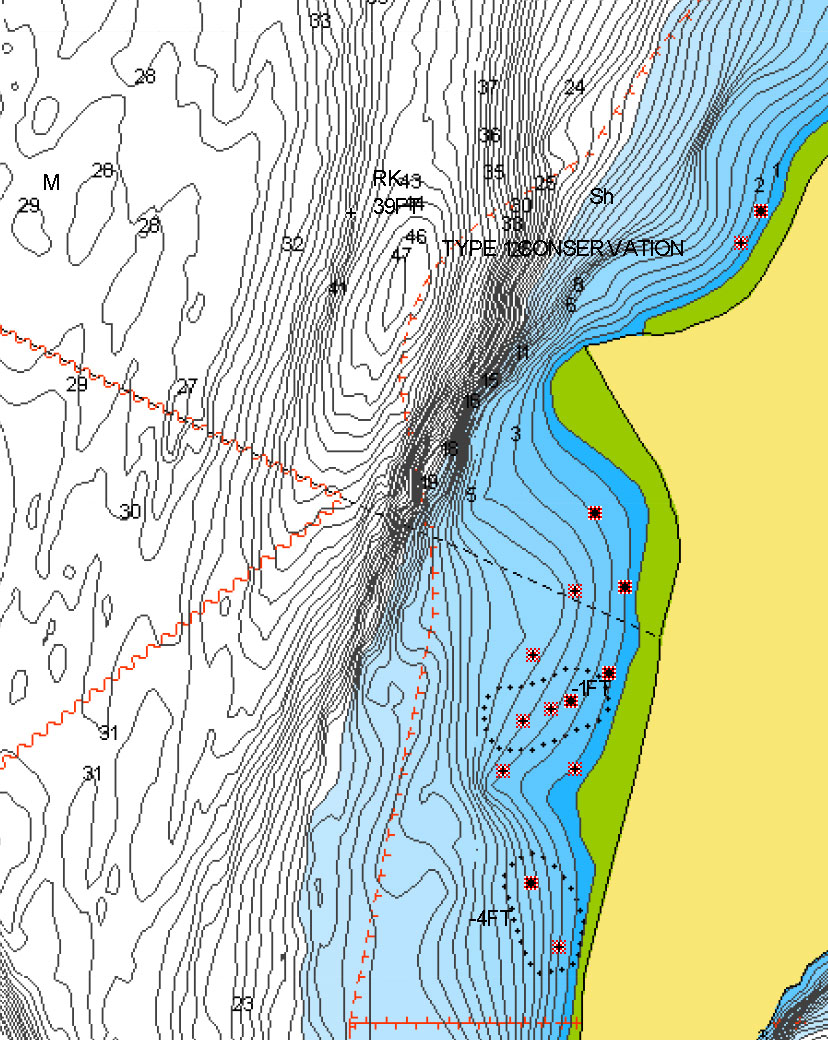
Reaching back through my memory, a decade-plus, to when I spent most of my fishing time with my friend and former fishing partner, Dave Parrillo, I was reminded of a spot that produced some great fish during May and early-June: Dutch Island. At the time, I was a surfcasting purist and it pained me that my fishing partner was making the leap to boat fishing. But it was hard to argue with his results and I’ve since learned my lesson. This 100-acre island, located just inside the West Passage to Narragansett Bay, is a very fishy place.
Dutch Island has a long and interesting history, I don’t have the space to go into great detail, but I can give you a summary. According to Wikipedia, Dutch Island was first settled in 1636 by Abraham Pietersen van Deusen of the Dutch West India Company. He established a trading post there to trade with the Narragansetts, trading cloth, liquor and tools for furs, fish and venison. In 1854 the first lighthouse was erected on the south end of the island and made from stones gathered along its shores. In 1878 a larger lighthouse was built to aid mariners entering Dutch Harbor. From the Civil War through World War II, Dutch Island saw sporadic occupation by the U.S. military, Fort Greble, named for Lt. John Trout Greble who was the first officer of the Regular Army killed in the Civil War, was built on the island toward the end of the 19th century and was used to protect Narragansett Bay and also for training exercises. Since WWII, the island has not been used by the military and remains uninhabited, although the remains of Fort Greble still stand.

The main thing that I remember from fishing around Dutch Island is the wicked rips that originate from the southern point and from the sandy point on the western side. Both of these locations have the potential to hold large numbers of stripers ranging from schoolies to trophy class fish. Drifting eels in the rips forming off that sandy, west-facing point, regularly produced stripers in the 18- to 30-pound class and there is definite potential for larger fish here as well. The island also serves as shelter for Dutch Harbor to the east where kayakers and small boats can find calmer, fishable waters when the wind cranks.
The south-facing points on the island are made of the same stepped shale that you’ll see along the shorelines of Narragansett and Jamestown and, even though I haven’t fished these spots for tog, I’m confident in saying that they will hold blackfish and scup, too. Taking a closer look at the Navionics only serves to solidify that belief. Hard drop-offs mirror the shape of the east side of that southern point and are sure to be littered with rocky debris and ledges galore. This area could be a great place to duck out of the wind for some togging in a howling west wind.

False albacore have been known to frequent the rips around the island as well. And while these spots might not be as reliable as some of the more famous albie haunts nearby, the fact that Dutch Island is ‘on the way back to the dock’ for anyone leaving ports inside the bay makes it a logical stop anytime albies are around.
I love a spot with history. And this one has it in spades, from the Narragansetts that frequented the island before European occupation, to the trading post, to the lighthouses, to Fort Greble, to the many military footnotes, it’s easy to get lost looking upon its shores while waiting for a bite. And this, often overlooked, spot has a lot to offer fishermen, regardless of which inshore species you want to catch.


